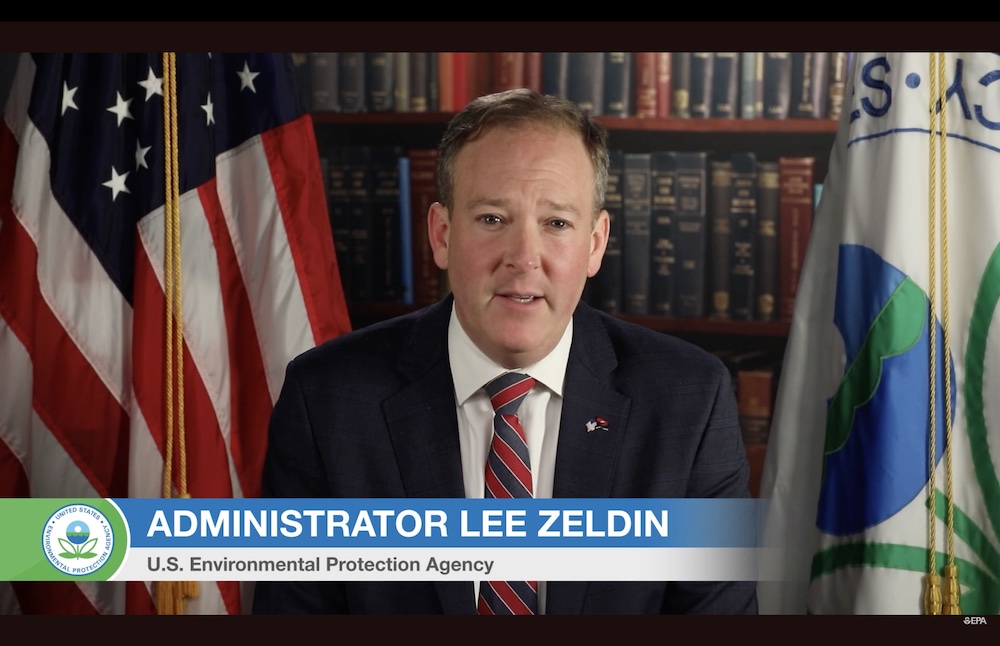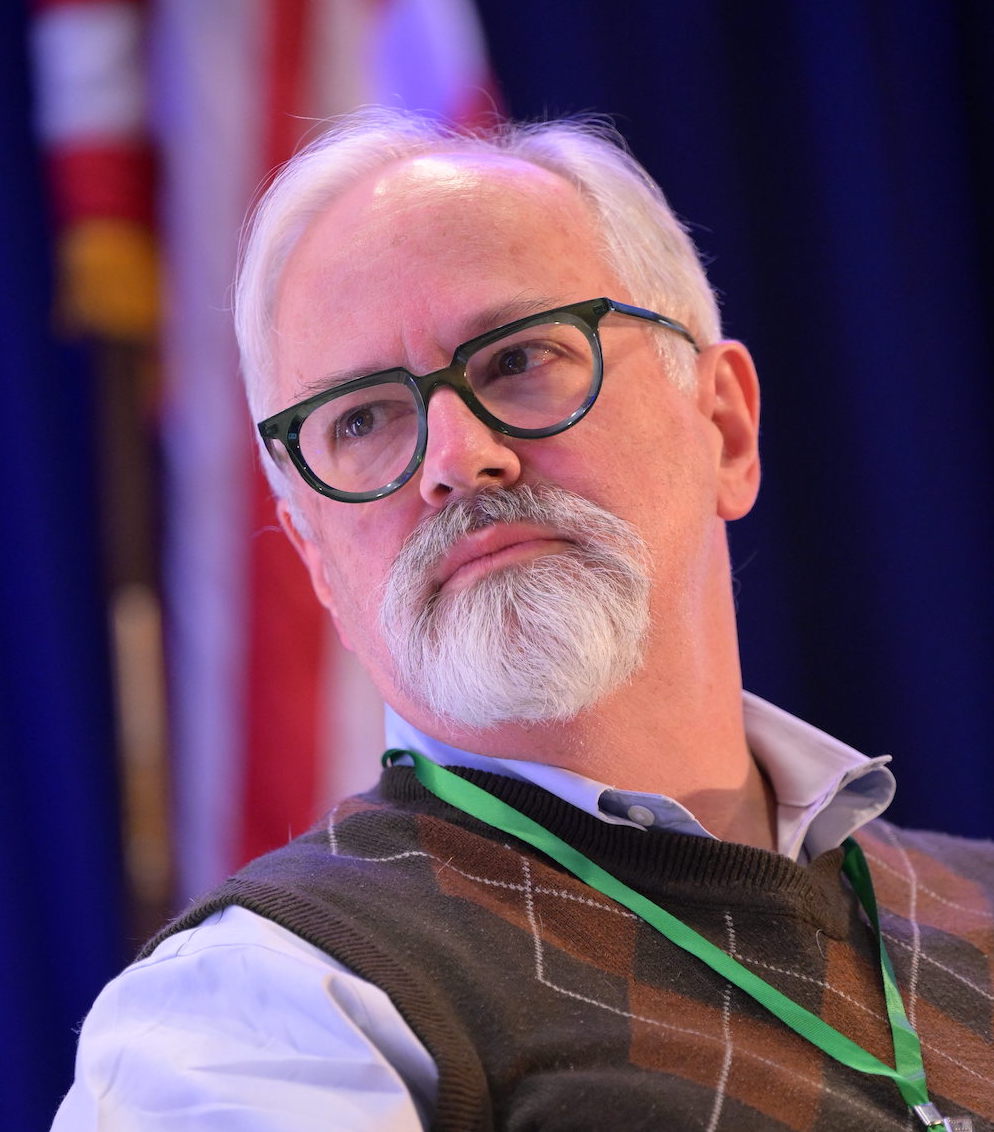
- Details
- By Brian Edwards
- Energy | Environment
EPA Administrator Lee Zeldin announced plans to investigate and try to claw back $20 billion in clean energy grants awarded through the Greenhouse Gas Reduction Fund (GGRF), including about $1.5 billion earmarked for tribal communities — a move experts say will likely face court challenges.
Zeldin on Wednesday called for the termination of an agreement with the federal government’s financial agent, widely believed to be Citibank, where the funds have been deposited for eight organizations selected for two GGRF programs to finance clean energy projects. In a video statement, Zeldin said EPA needs to reassume responsibility for the funds and provide oversight for the programs.
“This scheme was the first of its kind in EPA history, and it was purposefully designed to obligate all of the money in a rush job with reduced oversight,” Zeldin said, adding that he would refer the matter to the EPA's inspector general’s office and that he plans to “work with the Justice Department” as well.
Senator Ed Markey (D-Mass.), who helped create the GGRF legislation, defended the funding arrangement, noting that financial agency agreements have been used by the U.S. Treasury since the 1860s. “Congress passed a law with a majority of votes that directed the Environmental Protection Agency to establish a national clean financing network,” Markey said in a statement. “The EPA followed the law...and entered into legally binding contracts with grant recipients.”
Cheri Smith, president and CEO of the Alliance for Tribal Clean Energy, quickly condemned the EPA's move, calling it “an egregious attempt to undermine legally allocated funding” and “a direct attack on tribal sovereignty.”
The Greenhouse Gas Reduction Fund's so-called “green bank” programs — the $6 billion Clean Communities Investment Accelerator (CCIA) and the $14 billion National Clean Investment Fund (NCIF) — aim to finance clean energy projects in underserved areas, with nearly $1.5 billion earmarked for tribal communities. The Native CDFI Network received $400 million to support Native communities, according to prior Tribal Business News reporting, while Climate United Fund pledged 10% of its $7 billion award to tribes and Native communities.
Some of these funds are already being put to use. Climate United has issued millions in loans and grant funding, including $10.8 million for a trio of tribal solar projects in eastern Oregon and Idaho, according to Smith, who serves on Climate United's advisory council.
A third GGRF program — the $7 billion Solar for All program — remained under EPA control and has largely seen its funding frozen by the Trump administration despite a federal judge’s order to release the funds. Solar for All dedicated more than $500 million for funding tribal solar projects, including $156 million to Oweesta Corporation, $135.6 million to a coalition of Northern Plains tribes led by the Manda, Hidatsa and Arikara (MHA) Nation, and $62.5 million to the Tanana Chiefs Conference in Alaska.
Zeldin’s efforts to claw back the funds will not be an easy task for the federal government, according to legal and government experts.
Former EPA implementation director Zealan Hoover told Tribal Business News previously that grant agreements constitute binding legal contracts governed by federal regulations, suggesting potential legal hurdles to reclaiming the funds. “This is a legal contract (and) the United States has a long and robust history of upholding contract law across the board,” he said.
“While it's true this is the first time EPA has done this, there are provisions in the agreement to stop the flow of funds and to claw back funds where there is evidence of fraud — they have not presented any such evidence,” Hoover said in an interview today.
The banking arrangement, which follows longstanding Treasury Department precedent dating back to the 1800s, was developed over the course of a year with extensive input from career staff at EPA and Treasury, Hoover said. The EPA's Office of Inspector General received briefings “to ensure robust oversight systems were in place,” he said.
David Super, a professor of law and economics at Georgetown University Law Center, told Politico’s E&E News that if EPA shirks its contractual obligations, it could ultimately cost taxpayers more. "This isn't just a clever way of postponing the expenditures," he said. "This is a way of taking a situation in which the government is contracted for valuable services and throwing it away."
Zeldin's pledge to involve the EPA's Office of Inspector General comes at a time when the office currently lacks a permanent leader. Former EPA Inspector General Sean O'Donnell was among 17 inspectors general removed by President Trump in January, despite his office recovering more than $2 billion and filing over 60 oversight reports in 2024.
In a December podcast before his removal, O'Donnell had expressed concerns about the rapid distribution of GGRF funds to "a handful of recipients" and noted his office had received no funding to oversee the program.
An EPA spokesperson reinforced these oversight concerns, saying in an email that the Biden-Harris administration was “more worried with getting the money out the door before Inauguration Day than doing it the right way with proper financial management protocols.”
The EPA’s move to claw back the funding also comes as the Trump administration faces legal setbacks in its broader attempts to freeze federal funding. On Tuesday, a federal appeals court refused to halt an order by a federal judge in Rhode Island requiring the administration to release billions in federal grants and loans that had already been approved. In that case, more than 20 state attorneys general successfully sued to stop a widespread funding freeze.
“Tribal and other communities, clean energy advocates and lawmakers are prepared to fight this in court,” Smith of the Alliance for Tribal Clean Energy wrote in an email to Tribal Business News. “But in the meantime, we must leverage philanthropy, impact and conventional investment, and Tribal-led initiatives to keep these critical projects moving forward.”
The Greenhouse Gas Reduction Fund was created to establish a national financing network for clean energy projects in disadvantaged communities, aiming to leverage public funding for private investment in projects like solar installations and energy efficiency upgrades.
Republicans have opposed the program since its inception, passing a bill last year to repeal the fund, arguing it could support otherwise unfundable projects.
Chez Oxendine provided reporting on this story, which was updated with statements from an EPA spokesperson and Sen. Markey.
